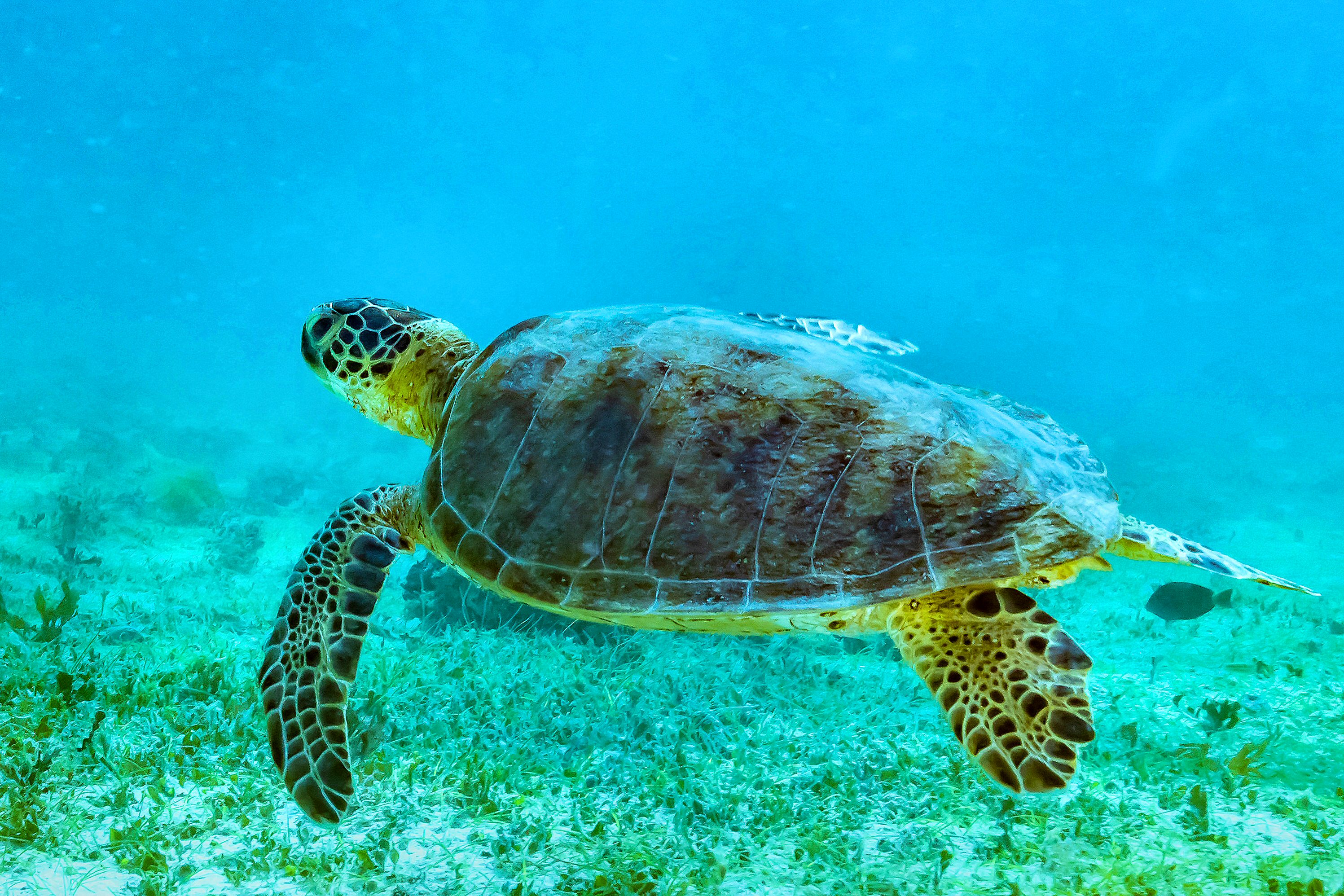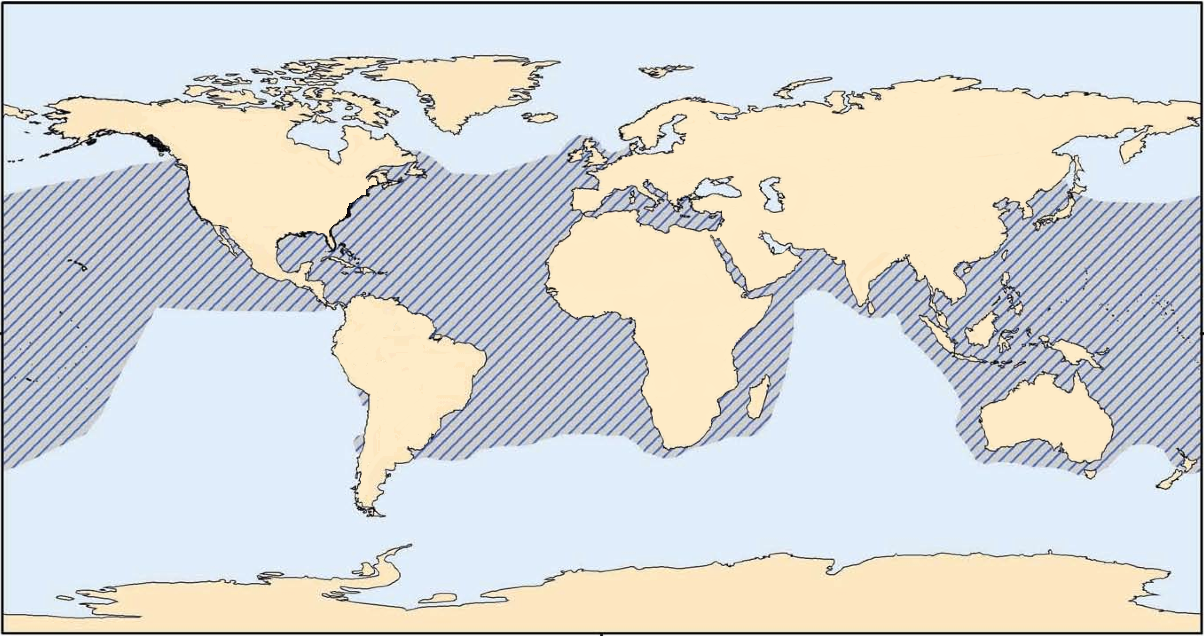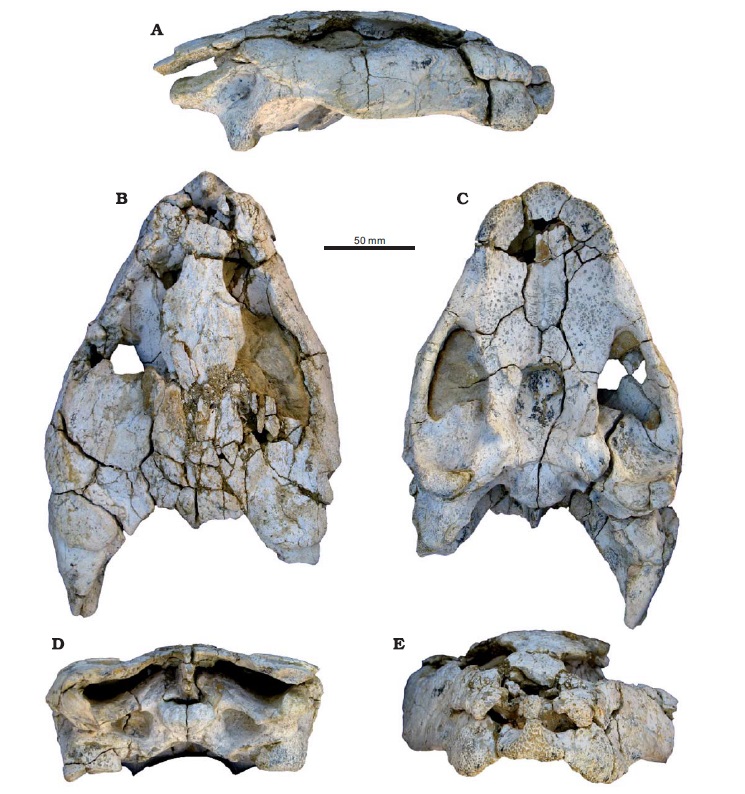|
Chelonioidea
Sea turtles (superfamily Chelonioidea), sometimes called marine turtles, are reptiles of the order Testudines and of the suborder Cryptodira. The seven existing species of sea turtles are the flatback, green, hawksbill, leatherback, loggerhead, Kemp's ridley, and olive ridley. Six of the seven sea turtle species, all but the flatback, are present in U.S. waters, and are listed as endangered and/or threatened under the Endangered Species Act. They are listed as threatened with extinction globally on the IUCN Red List of Threatened Species. The flatback turtle is found only in the waters of Australia, Papua New Guinea, and Indonesia. Sea turtles can be categorized as hard-shelled ( cheloniid) or leathery-shelled ( dermochelyid).Wyneken, J. 2001. The Anatomy of Sea Turtles. U.S Department of Commerce NOAA Technical Memorandum NMFS-SEFSC-470, 1-172 pp. The only dermochelyid species of sea turtle is the leatherback. Description For each of the seven species of sea turtles, ... [...More Info...] [...Related Items...] OR: [Wikipedia] [Google] [Baidu] |
Ctenochelyidae
Ctenochelyidae is an extinct family of sea turtles which lived in North America during the Santonian-Maastrichtian stages of the Late Cretaceous. Classification The family is defined as a monophyletic clade arising from the most recent ancestors of ''Ctenochelys'' and ''Peritresius''. Fossils of ctenochelyids are known from the Western Interior Seaway and Mississippi embayment. As of 2025, four genera have been assigned to this family: ''Asmodochelys'', ''Ctenochelys'', ''Peritresius'' and ''Prionochelys''. Below is a cladogram from the analysis by Gentry, Ebersole & Kiernan (2019): References {{Taxonbar, from=Q134542571 Late Cretaceous reptiles of North America Late Cretaceous turtles Prehistoric turtle stubs Chelonioidea Turtle families Extinct turtles Santonian first appearances Maastrichtian extinctions ... [...More Info...] [...Related Items...] OR: [Wikipedia] [Google] [Baidu] |
Kemp's Ridley Sea Turtle
Kemp's ridley sea turtle (''Lepidochelys kempii)'', also called commonly the Atlantic ridley sea turtle, Kemp's ridley turtle, and Kemp's ridley, is a species of turtle in the family Cheloniidae. ''L. kempii'' is the rarest species of sea turtle and is the world's most endangered species of sea turtle as well as the smallest. It is one of two living species in the genus '' Lepidochelys'' (the other one being ''L. olivacea'', the olive ridley sea turtle). The species ''L. kempii'' primarily occupies habitat around the Gulf of Mexico, though its migrations into the Atlantic Ocean are being affected by rising temperatures. Rising sea temperatures expand this species range, leaving them vulnerable to cold-shocking events when weather changes. Kemp's ridley sea turtle is listed as endangered under the Endangered Species Act (ESA), and conservation efforts are attempting to rebuild population numbers. Human activity, including habitat destruction, climate change, and oil spills, thr ... [...More Info...] [...Related Items...] OR: [Wikipedia] [Google] [Baidu] |
Cryptodira
The Cryptodira (') are a suborder of Testudines that includes most living tortoises and turtles. Cryptodira is commonly called the "Hidden-Neck Turtles" or the "Inside-Neck Turtles". Cryptodira differ from Pleurodira (side-necked turtles) in that they lower their necks and pull the heads straight back into the shells, instead of folding their necks sideways along the body under the shells' marginals. They include among their species freshwater turtles, snapping turtles, tortoises, softshell turtles, and sea turtles. Neck retraction The Cryptodira are characterized by retraction of the head in the vertical plane, which permits for primarily vertical movements and restricted lateral movements outside of the shell. These motions are largely due to the morphology and arrangement of cervical vertebrae. In all recent turtles, the cervical column consists of nine joints and eight vertebrae. Compared to the narrow vertebrae and the closely positioned zygapophyses of the pleur ... [...More Info...] [...Related Items...] OR: [Wikipedia] [Google] [Baidu] |
Turtle
Turtles are reptiles of the order (biology), order Testudines, characterized by a special turtle shell, shell developed mainly from their ribs. Modern turtles are divided into two major groups, the Pleurodira (side necked turtles) and Cryptodira (hidden necked turtles), which differ in the way the head retracts. There are 360 living and recently extinct species of turtles, including land-dwelling tortoises and freshwater terrapins. They are found on most continents, some islands and, in the case of sea turtles, much of the ocean. Like other Amniote, amniotes (reptiles, birds, and mammals) they breathe air and do not lay eggs underwater, although many species live in or around water. Turtle shells are made mostly of bone; the upper part is the domed Turtle shell#Carapace, carapace, while the underside is the flatter plastron or belly-plate. Its outer surface is covered in scale (anatomy), scales made of keratin, the material of hair, horns, and claws. The carapace bones deve ... [...More Info...] [...Related Items...] OR: [Wikipedia] [Google] [Baidu] |
Dermochelyidae
Dermochelyidae is a family of sea turtles which has seven extinct genera and one extant genus, containing one living species, the leatherback sea turtle (''Dermochelys coriacea''). The oldest fossils of the group date to the Late Cretaceous The Late Cretaceous (100.5–66 Ma) is the more recent of two epochs into which the Cretaceous Period is divided in the geologic time scale. Rock strata from this epoch form the Upper Cretaceous Series. The Cretaceous is named after ''cre .... Classification of known genera The following list of dermochelyid species was published by Hirayama and Tong in 2003, unless otherwise noted. * '' Arabemys crassiscutata'' * †'' Eosphargis breineri'' * '' Mesodermochelys undulatus'' *Subfamily Dermochelyinae ** †'' Cosmochelys'' ** '' Dermochelys coriacea'' – leatherback sea turtle ** †'' Psephophorus'' Phylogeny Evers et al. (2019): References Bibliography * External linksFamily Dermochelyidae (Leatherback turtles) from Tu ... [...More Info...] [...Related Items...] OR: [Wikipedia] [Google] [Baidu] |
Testudines
Turtles are reptiles of the order (biology), order Testudines, characterized by a special turtle shell, shell developed mainly from their ribs. Modern turtles are divided into two major groups, the Pleurodira (side necked turtles) and Cryptodira (hidden necked turtles), which differ in the way the head retracts. There are 360 living and recently extinct species of turtles, including land-dwelling tortoises and freshwater terrapins. They are found on most continents, some islands and, in the case of sea turtles, much of the ocean. Like other Amniote, amniotes (reptiles, birds, and mammals) they breathe air and do not lay eggs underwater, although many species live in or around water. Turtle shells are made mostly of bone; the upper part is the domed Turtle shell#Carapace, carapace, while the underside is the flatter plastron or belly-plate. Its outer surface is covered in scale (anatomy), scales made of keratin, the material of hair, horns, and claws. The carapace bones deve ... [...More Info...] [...Related Items...] OR: [Wikipedia] [Google] [Baidu] |
Flatback Sea Turtle
The Australian flatback sea turtle (''Natator depressus'') is a species of sea turtle in the Family (biology), family Cheloniidae. The species is Endemism, endemic to the sandy beaches and shallow coastal waters of the Australian continental shelf. This turtle gets its common name from the fact that its shell has a flattened, lower dome than the other sea turtles. It can be olive green to grey with a cream underside. It averages from in carapace length and can weigh from . The hatchlings are larger than other sea turtle hatchlings when they hatch and emerge from their nests. The flatback turtle is listed by the IUCN Red List of Threatened Species as data deficient, meaning there is insufficient scientific information to determine its conservation status at this time. It was previously listed as vulnerable in 1994. It is not as threatened as other sea turtles due to its small dispersal range. This animal can be 31 to 37 inches long and about 100 kg in weight. Taxonomy The ... [...More Info...] [...Related Items...] OR: [Wikipedia] [Google] [Baidu] |
Loggerhead Sea Turtle
The loggerhead sea turtle (''Caretta caretta'') is a species of sea turtle, oceanic turtle distributed throughout the world. It is a marine reptile, belonging to the Family (biology), family Cheloniidae. The average loggerhead measures around in carapace length when fully grown. The adult loggerhead sea turtle weighs approximately , with the largest specimens weighing in at more than . The skin ranges from yellow to brown in color, and the shell is typically reddish brown. No external differences in sex are seen until the turtle becomes an adult, the most obvious difference being the adult males have thicker tails and shorter plastrons (lower shells) than the females. The loggerhead sea turtle is found in the Atlantic Ocean, Atlantic, Pacific Ocean, Pacific, and Indian Oceans, as well as the Mediterranean Sea. It spends most of its life in saltwater and estuarine habitats, with females briefly coming ashore to lay eggs. The loggerhead sea turtle has a low reproductive rate; fem ... [...More Info...] [...Related Items...] OR: [Wikipedia] [Google] [Baidu] |
Ancient Greek
Ancient Greek (, ; ) includes the forms of the Greek language used in ancient Greece and the classical antiquity, ancient world from around 1500 BC to 300 BC. It is often roughly divided into the following periods: Mycenaean Greek (), Greek Dark Ages, Dark Ages (), the Archaic Greece, Archaic or Homeric Greek, Homeric period (), and the Classical Greece, Classical period (). Ancient Greek was the language of Homer and of fifth-century Athens, fifth-century Athenian historians, playwrights, and Ancient Greek philosophy, philosophers. It has contributed many words to English vocabulary and has been a standard subject of study in educational institutions of the Western world since the Renaissance. This article primarily contains information about the Homeric Greek, Epic and Classical periods of the language, which are the best-attested periods and considered most typical of Ancient Greek. From the Hellenistic period (), Ancient Greek was followed by Koine Greek, which is regar ... [...More Info...] [...Related Items...] OR: [Wikipedia] [Google] [Baidu] |
Late Jurassic
The Late Jurassic is the third Epoch (geology), epoch of the Jurassic Period, and it spans the geologic time scale, geologic time from 161.5 ± 1.0 to 143.1 ± 0.8 million years ago (Ma), which is preserved in Upper Jurassic stratum, strata.Owen 1987. In European lithostratigraphy, the name "Malm" indicates rocks of Late Jurassic age. In the past, ''Malm'' was also used to indicate the unit of geological time, but this usage is now discouraged to make a clear distinction between lithostratigraphic and geochronologic/chronostratigraphic units. Subdivisions The Late Jurassic is divided into three ages, which correspond with the three (faunal) stages of Upper Jurassic rock: Paleogeography During the Late Jurassic Epoch, Pangaea broke up into two supercontinents, Laurasia to the north, and Gondwana to the south. The result of this break-up was the emergence of the Atlantic Ocean, which initially was relatively narrow. Life forms This epoch is well known for many famous types of d ... [...More Info...] [...Related Items...] OR: [Wikipedia] [Google] [Baidu] |
Plesiochelys
''Plesiochelys'' ("near turtle") is a genus of late Jurassic European and Asian turtle. The type species is ''Plesiochelys etalloni''. Fossil records have discovered ''Plesiochelys bigleri'' and ''Plesiochelys etalloni'' from the Kimmeridge Clay of England and outside the Swiss and French Jura Mountains. A recent studyEvers, S. W., & Benson, R. B. (2019). A new phylogenetic hypothesis of turtles with implications for the timing and number of evolutionary transitions to marine lifestyles in the group. ''Palaeontology'', 62(1), 93–134. placed ''Plesiochelys'' as an Angolachelonia and outside Testudines Turtles are reptiles of the order (biology), order Testudines, characterized by a special turtle shell, shell developed mainly from their ribs. Modern turtles are divided into two major groups, the Pleurodira (side necked turtles) and Crypt .... References Sources *Gaffney, Eugene S. "A taxonomic revision of the Jurassic turtles Portlandemys and Plesiochelys. ''A ... [...More Info...] [...Related Items...] OR: [Wikipedia] [Google] [Baidu] |
Angolachelys
''Angolachelys'' is an extinct genus of African marine turtle which existed in Angola during the Turonian stage of the Late Cretaceous. The type species is ''Angolachelys mbaxi''. The type MGUAN-PA includes skull, jaw, and postcranial fragments found in the Tadi Beds of the Itombe Formation. Phylogeny Cladogram A cladogram (from Greek language, Greek ''clados'' "branch" and ''gramma'' "character") is a diagram used in cladistics to show relations among organisms. A cladogram is not, however, an Phylogenetic tree, evolutionary tree because it does not s ... after Mateus ''et al.'' (2009). References Thalassochelydia Prehistoric turtle genera Turonian life Late Cretaceous reptiles of Africa Fossil taxa described in 2009 {{paleo-turtle-stub ... [...More Info...] [...Related Items...] OR: [Wikipedia] [Google] [Baidu] |







